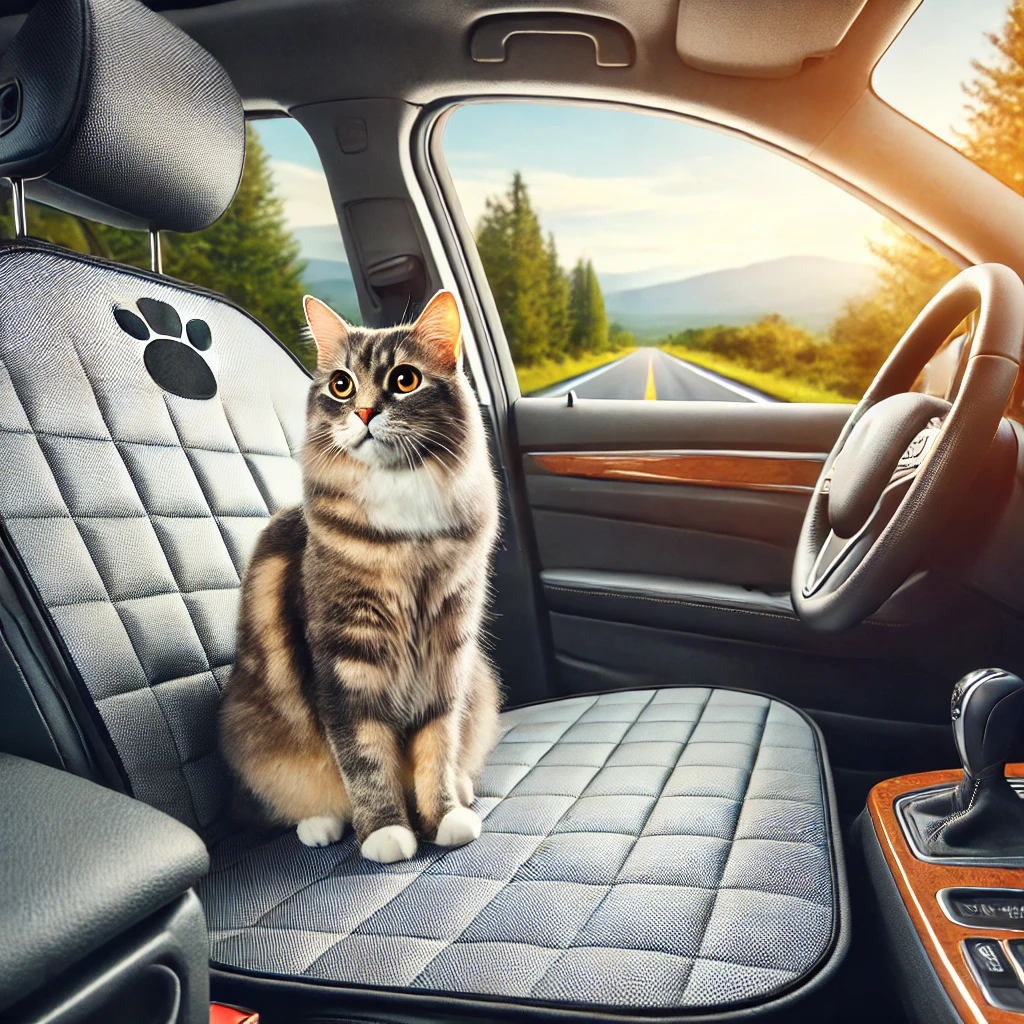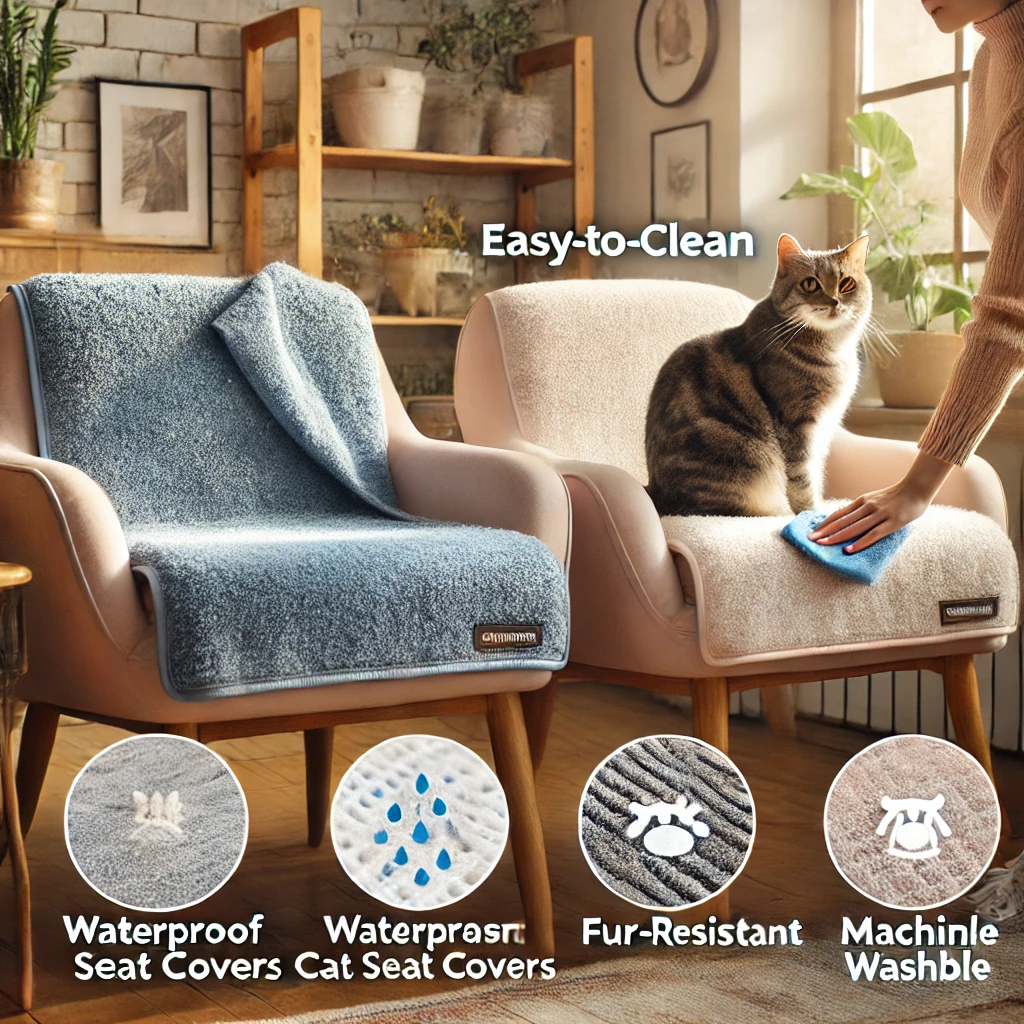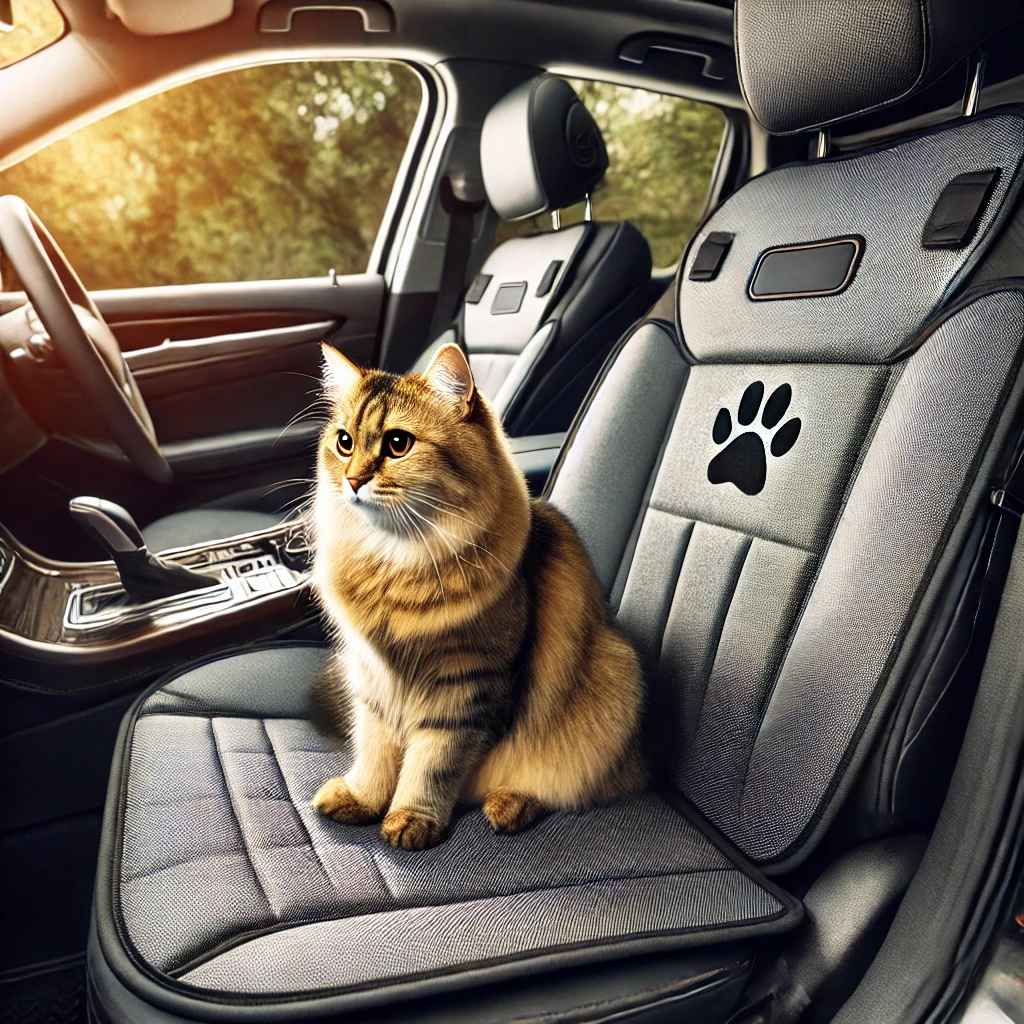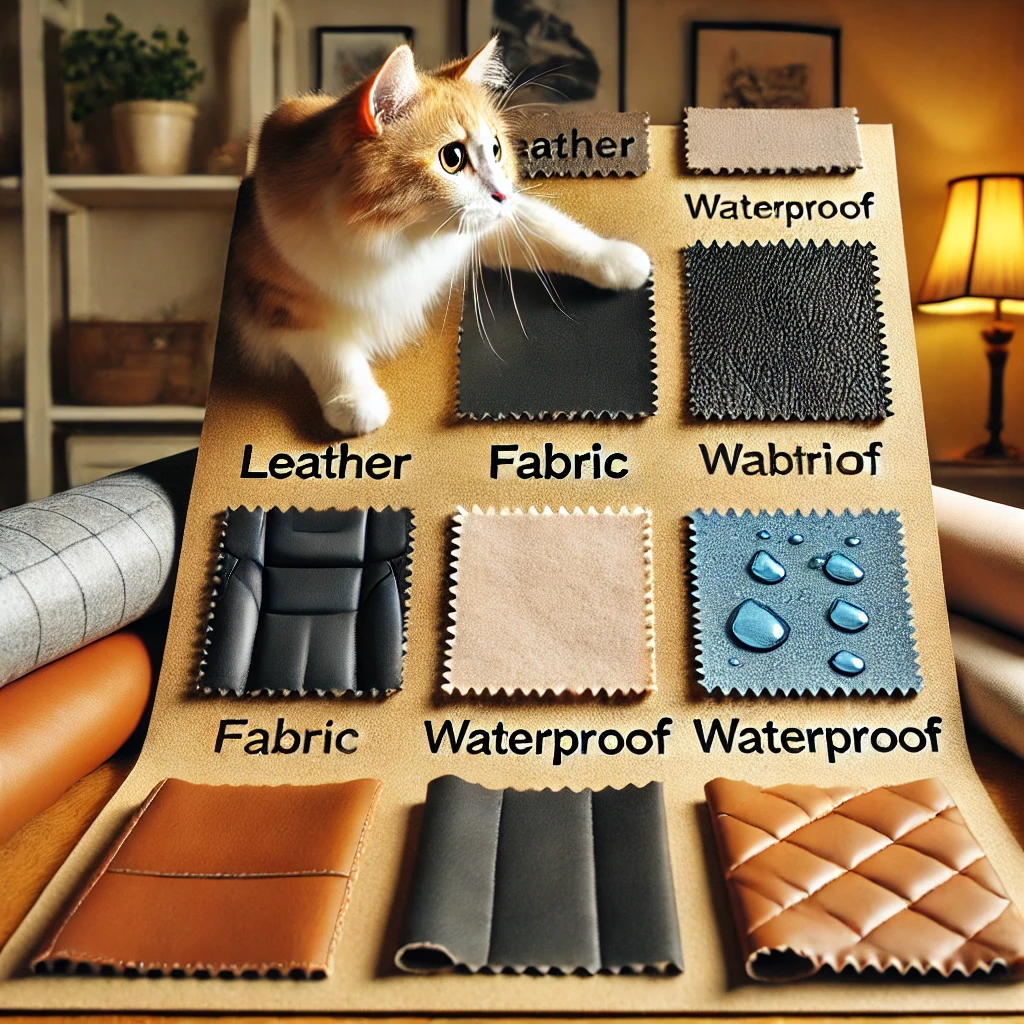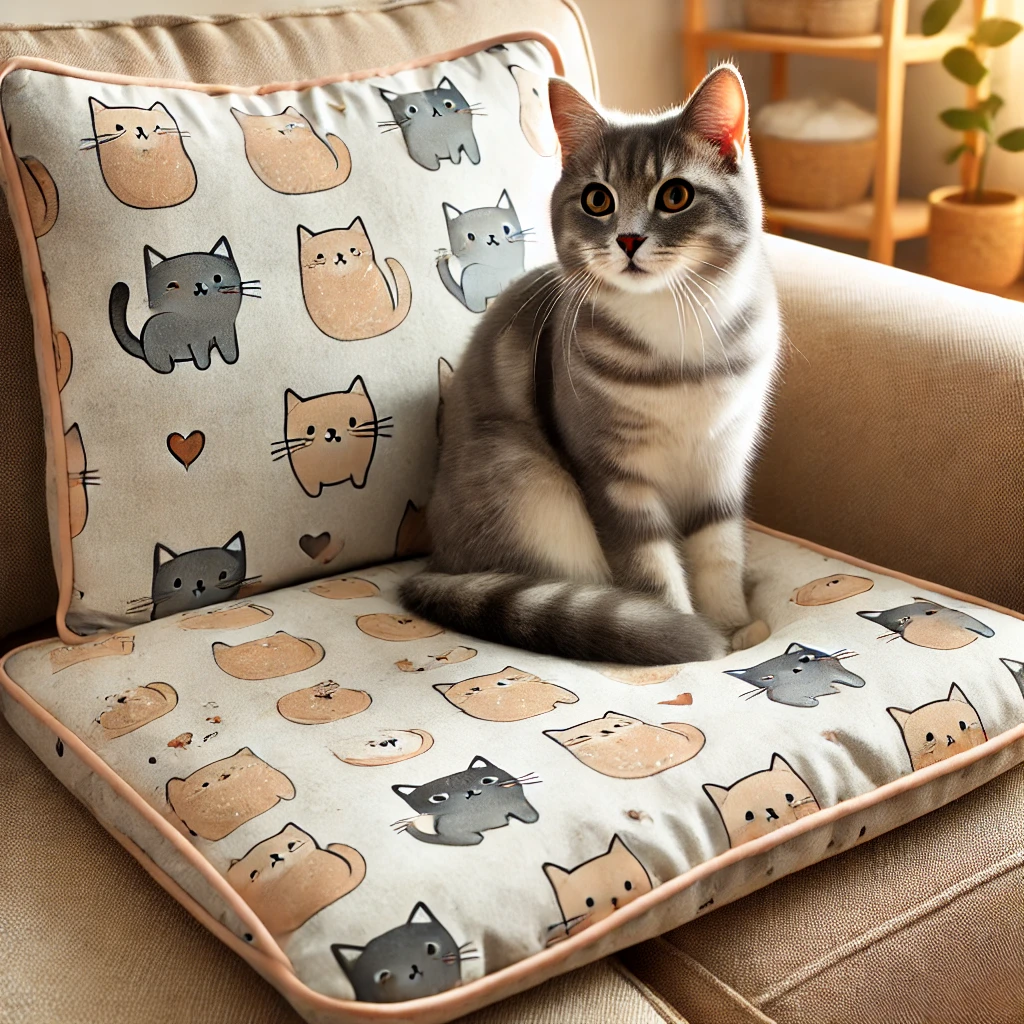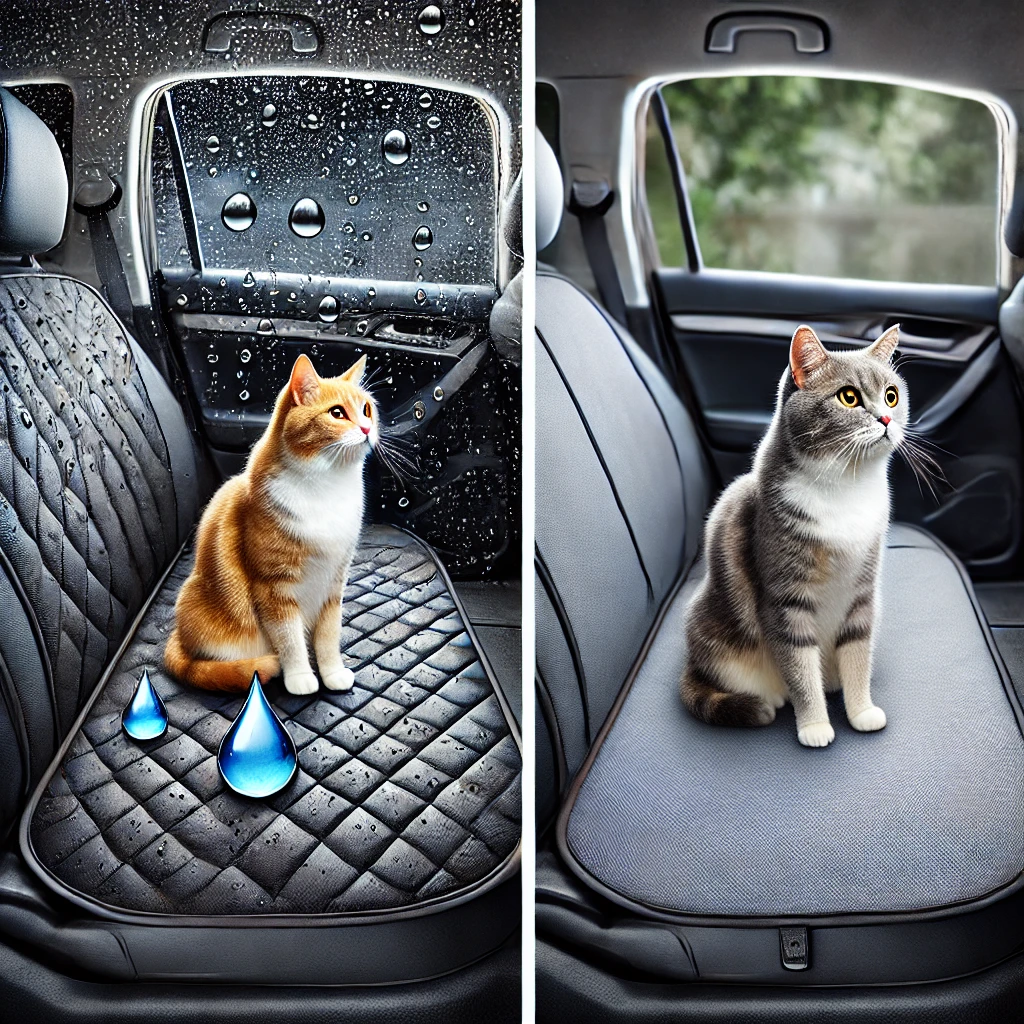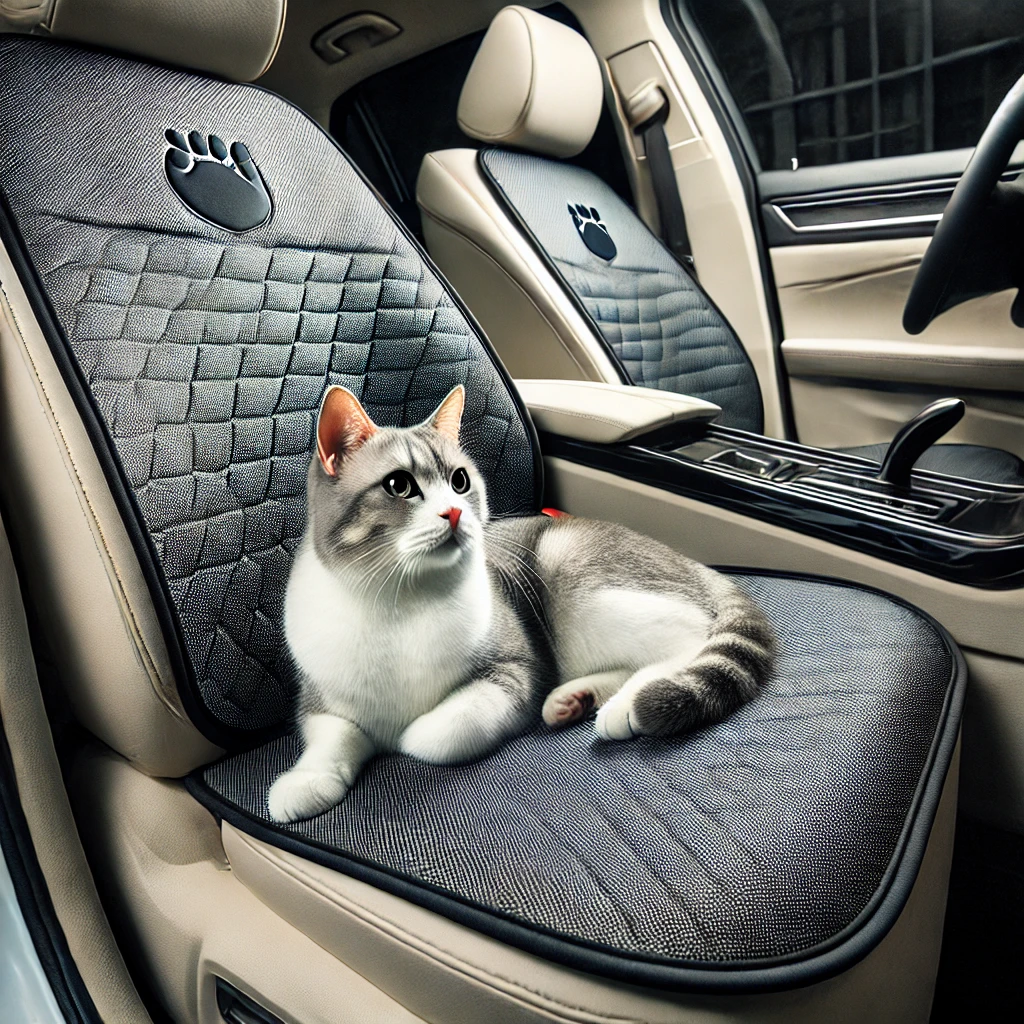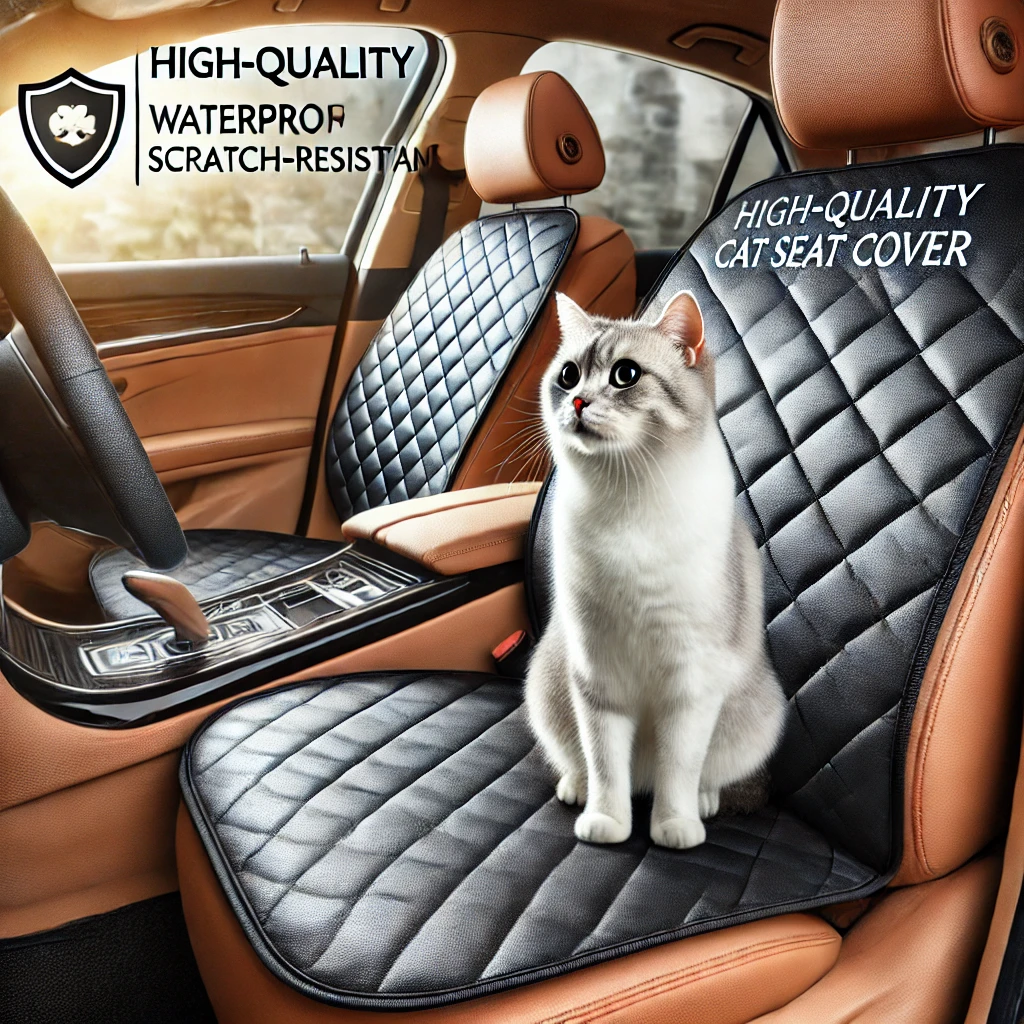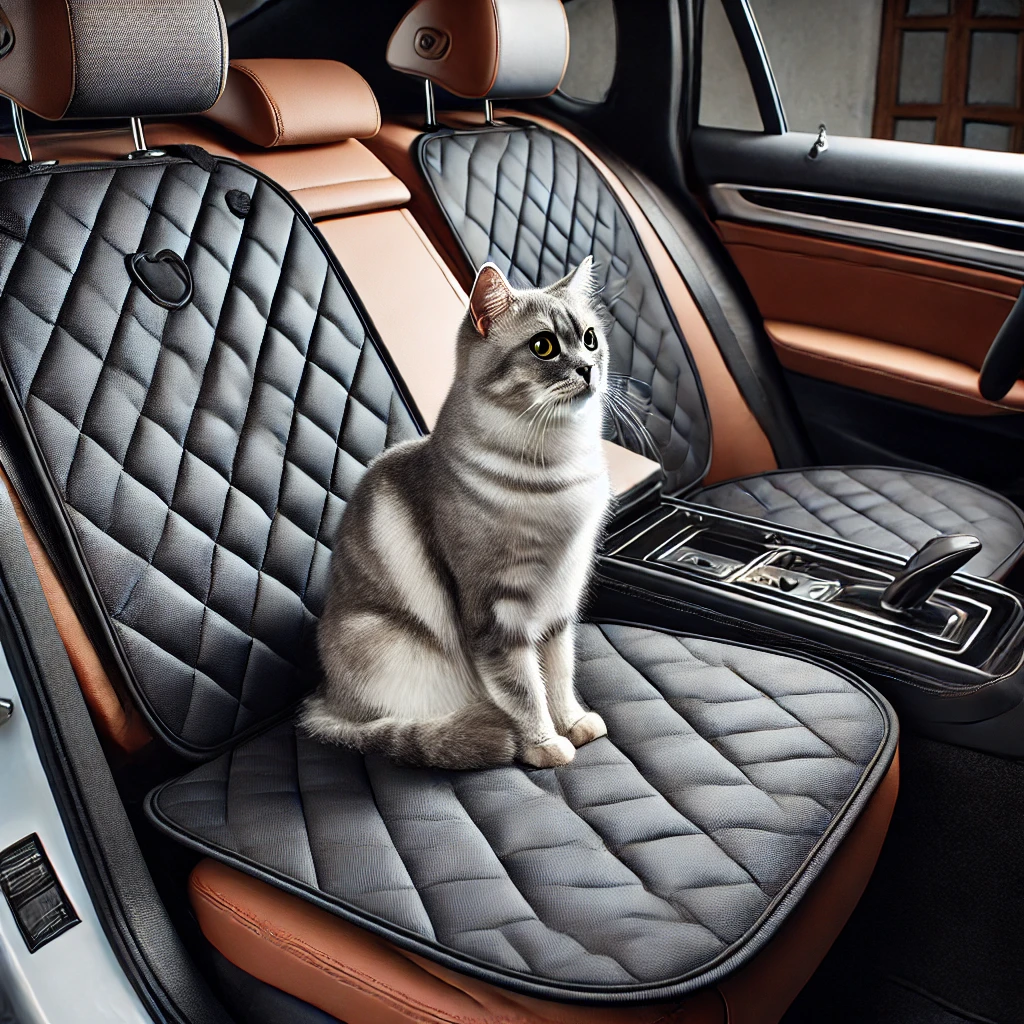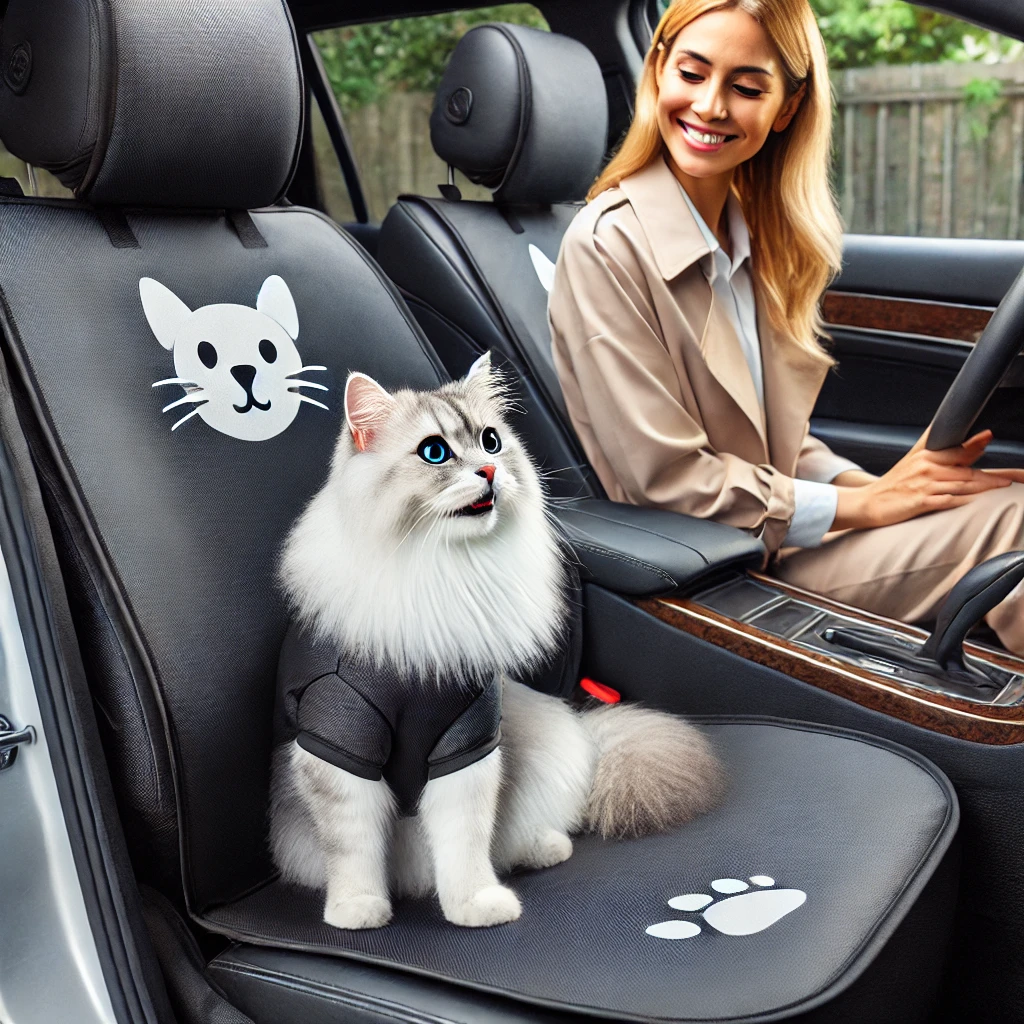Why Cat Seat Covers Are a Must-Have for Pet-Friendly Road Trips
The Importance of Protecting Your Car During Travel
Understanding the Challenges of Traveling with Cats
Traveling with cats can be a rewarding experience, but it also comes with unique challenges. Unlike dogs, cats are often more sensitive to changes in their environment. The unfamiliar sights, sounds, and movements of a car can cause stress, leading to behaviors such as scratching, shedding, or even accidents. Without proper protection, a car’s interior can quickly become damaged, leaving behind fur, claw marks, and unpleasant odors.
Cat seat covers act as a barrier between a pet and the car’s upholstery. They are designed to withstand scratching, absorb spills, and collect loose fur, making cleanup much easier. For pet owners who frequently take road trips, investing in a high-quality seat cover can save both time and money in the long run by preserving the vehicle’s condition.
How Cat Seat Covers Preserve Your Car’s Interior
Car interiors are often made from materials that are not pet-friendly. Fabric seats can trap odors and stains, while leather seats are prone to scratches. Cat seat covers provide a protective layer that prevents direct contact between a cat’s claws and the car’s surfaces. Many covers are made from durable, waterproof materials that resist tears and repel liquids, ensuring that any accidents or spills do not seep into the seat foam.
Additionally, seat covers help minimize the accumulation of pet hair. Cats shed regularly, and their fur can embed itself deep into car upholstery, making it difficult to remove. A seat cover with a non-slip backing keeps fur on the surface, allowing owners to simply shake it off or vacuum it away. This feature is especially beneficial for those who share their car with passengers who may have allergies.
Enhancing Comfort and Safety for Feline Passengers
Beyond protecting the car, cat seat covers also contribute to a cat’s comfort and safety during travel. Many covers come with extra padding, providing a soft surface for the cat to rest on. Some designs even include built-in anchors for securing pet carriers or harnesses, preventing unnecessary movement that could lead to injury in case of sudden stops.
A comfortable cat is less likely to exhibit anxious behaviors, such as excessive meowing or attempts to escape. By creating a familiar and cozy space within the car, seat covers can help reduce travel-related stress for pets. For longer trips, a well-padded cover can make the journey more pleasant, encouraging the cat to relax rather than fidget or scratch at the seats.
Choosing the Right Seat Cover for Your Needs
Not all cat seat covers are created equal. When selecting one, pet owners should consider factors such as material durability, ease of cleaning, and fit. Waterproof covers are ideal for preventing liquid damage, while machine-washable options simplify maintenance. A snug fit is crucial to prevent the cover from shifting during travel, which could expose the seats to damage.
Some covers come with additional features, such as pockets for storing pet supplies or adjustable straps for a secure hold. Investing in a high-quality seat cover ensures long-term protection for both the car and the cat, making it an essential accessory for any pet-friendly road trip.
Reducing Stress for Cats During Car Rides
Why Cats Experience Anxiety in Vehicles
Cats are creatures of habit, and sudden changes in their environment can trigger stress. The confined space of a car, combined with unfamiliar noises and movements, can make travel an overwhelming experience. Unlike dogs, who may enjoy sticking their heads out the window, cats often feel vulnerable in vehicles, leading to behaviors like hiding, excessive vocalization, or even motion sickness.
A well-designed cat seat cover can help mitigate this anxiety by providing a familiar and secure space. Some covers are made from soft, plush materials that mimic a cat’s favorite resting spot at home. The added comfort can make the car feel less intimidating, encouraging the cat to remain calm throughout the journey.
The Role of Scent and Familiarity in Calming Cats
Cats rely heavily on scent to feel safe. When traveling, the unfamiliar smells of a car can contribute to their discomfort. Cat seat covers that are machine-washable allow owners to launder them with pet-safe detergents, ensuring that the cover retains a familiar scent. Some owners even place a blanket or towel with their cat’s scent on top of the seat cover for added reassurance.
Additionally, seat covers that double as pet beds can provide a sense of continuity. If a cat is accustomed to sleeping on a particular type of material at home, choosing a seat cover with a similar texture can make the transition to car travel smoother. Over time, the cat may associate the seat cover with safety, reducing stress during future trips.
Preventing Motion Sickness and Discomfort
Motion sickness is a common issue for cats during car rides. The sensation of movement, combined with visual stimuli, can cause nausea and vomiting. A stable and comfortable seating arrangement can help alleviate this problem. Seat covers with non-slip bottoms prevent shifting, reducing the disorienting feeling that contributes to motion sickness.
Elevated or cushioned seat covers can also provide better visibility for cats who prefer to look out the window. By allowing them to observe their surroundings, these covers can help distract them from the discomfort of travel. For cats prone to anxiety, pheromone-infused seat covers or calming sprays can be used in conjunction with the cover to promote relaxation.
Training Cats to Associate Car Rides with Positive Experiences
Introducing a cat to car travel gradually can help reduce stress. Start by allowing the cat to explore the stationary car while it’s parked, rewarding them with treats and praise. Placing a familiar seat cover in the car during these sessions can help the cat form positive associations.
Over time, short drives around the neighborhood can acclimate the cat to the sensation of movement. Consistently using the same seat cover reinforces the idea that the car is a safe space. With patience and the right accessories, even the most travel-averse cats can learn to tolerate—or even enjoy—road trips.
Practical Benefits of Cat Seat Covers for Pet Owners
Simplifying Cleanup and Maintenance
One of the biggest advantages of cat seat covers is the ease of cleaning they provide. Unlike car seats, which may require professional detailing to remove pet hair and stains, most seat covers can be easily shaken out, vacuumed, or machine-washed. This convenience saves pet owners both time and money, especially after messy trips.
Waterproof seat covers are particularly useful for preventing urine or vomit from soaking into the car’s upholstery. A quick wipe-down is often all that’s needed to restore the cover to its original condition. For frequent travelers, this feature is invaluable in maintaining a clean and odor-free vehicle.
Versatility for Multi-Pet Households
Households with multiple pets can benefit greatly from cat seat covers. Dogs and cats may have different travel behaviors, but a durable seat cover can accommodate both. Non-slip designs ensure that the cover stays in place, even if pets move around during the ride.
Some seat covers are large enough to span the entire back seat, providing protection regardless of where the pets choose to sit. This versatility makes them a practical investment for families with more than one furry companion.
Cost-Effectiveness Compared to Car Repairs
Replacing or repairing damaged car upholstery can be expensive. Deep scratches, stubborn stains, and lingering odors may require professional intervention, costing hundreds of dollars. A high-quality cat seat cover, on the other hand, is a one-time purchase that offers ongoing protection.
By preventing damage before it occurs, seat covers help maintain the car’s resale value. For pet owners who plan to sell or trade in their vehicle in the future, this is an important consideration. The relatively low cost of a seat cover is a small price to pay compared to potential repair bills.
Enhancing Passenger Comfort for Humans
Even when traveling without pets, seat covers can improve passenger comfort. Many designs are stylish and blend seamlessly with a car’s interior, making them suitable for everyday use. For families with children, seat covers provide an extra layer of protection against spills and dirt.
Removable seat covers also allow for quick transitions between pet-friendly and human-only use. This flexibility ensures that the car remains functional for all types of trips, whether it’s a weekend adventure with a cat or a daily commute with coworkers.
Choosing the Best Cat Seat Cover for Your Needs
Key Features to Look for in a Cat Seat Cover
When shopping for a cat seat cover, durability should be a top priority. Look for materials such as heavy-duty polyester or nylon, which resist tearing and scratching. Waterproof or water-resistant coatings are essential for preventing liquid damage, while reinforced stitching ensures long-lasting use.
A secure fit is another critical factor. Seat covers with adjustable straps or anchor points stay in place, even on bumpy roads. Non-slip backing prevents shifting, keeping both the cover and the cat stable during travel.
Different Types of Cat Seat Covers
There are several styles of cat seat covers to choose from, depending on the vehicle and the cat’s needs. Bench seat covers provide full coverage for the back seat, ideal for larger cars or multiple pets. Bucket seat covers are designed for individual seats, offering a snug fit for compact vehicles.
For added convenience, some covers come with built-in pet harness attachments or storage pockets. Others feature reversible designs, allowing owners to switch between different textures or colors. Understanding the available options helps pet owners make an informed decision.
Top Recommendations for Cat Seat Covers
While personal preferences vary, some brands consistently receive positive reviews for their quality and functionality. The URPOWER Pet Seat Cover is praised for its waterproof material and non-slip grip. The Loyallife Hammock Seat Cover offers full backseat protection with a built-in leash clip for added safety.
For budget-conscious buyers, the Amazon Basics Pet Seat Cover provides reliable protection at an affordable price. Reading customer reviews and comparing features can help narrow down the best choice for individual needs.
Final Thoughts on Investing in a Cat Seat Cover
Cat seat covers are more than just a convenience—they are a necessity for pet owners who value their car’s condition and their cat’s comfort. By preventing damage, reducing stress, and simplifying cleanup, these covers make road trips enjoyable for both pets and humans.
Investing in a high-quality seat cover ensures that every journey is safe, clean, and hassle-free. Whether it’s a short vet visit or a cross-country adventure, the right seat cover can make all the difference in creating a pet-friendly travel experience.
